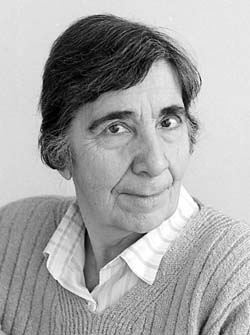Gregory the Great

In early September the Roman Catholic Church honors Pope Gregory I the Great (540-604), one of its most famous and venerated saints. Eastern Orthodoxy also reveres Pope Gregory, referring to him as Gregory Dialogus, i.e., dialogist.
Gregory was born ca. 540 in Rome into the family of a rich and influential senator. In 572 Emperor Justinian appointed him prefect, the highest administrative office in the city of Rome. After his father’s death, Gregory turned his ancestral palace in Rome into St. Andrew’s Benedictine Monastery, where he and 12 disciples lived in seclusion. He founded six more monasteries in Sicily, on lands he inherited from his father. Soon Pope Pelagius I ordained Gregory as regional deacon, and his successor, Pope Pelagius II, sent him to Constantinople to represent papal interests at the emperor’s court.
Gregory already showed great diplomatic wisdom, a distinguishing feature of his subsequent ecclesiastical and secular activities. He was elected to the papal throne in 590. Even today, almost 1,500 years later, historians believe that Gregory I was the wisest and most influential pope of the first millennium.
Pope Gregory I’s activities were primarily aimed at Christianizing Western Europe and eradicating the Arian heresy professed by many peoples, including the Visigoths, Lombards, and others. He also succeeded in converting the Anglo-Saxons with the help of 40 monks who he dispatched from St. Andrew’s Monastery to England. As a rule the pope used the spoken word and sermons rather than force or threats. He even managed to make peace with the Lombards, who laid siege to Rome in 595-593, thus markedly easing Italy’s plight and strengthening the influence of the Holy See in semi-barbarian Western Europe. According to his contemporaries, his “wise magnanimity” played an important role in his political successes, as well as the fact that he reckoned with the national particularities of the peoples being converted to Christianity.
Pope Gregory was not only busy Christianizing the peoples of Western Europe: as the head of the papal state he combated famines and epidemics, reorganized the administration of church lands, protected land lessees from exploitation, and cared for the poor — activities that were ahead of their time. (The Byzantine Empire, of which Italy was formally a part, took little notice of these problems.) Sources show that this wonderful pope also defended the rights of Jews. He was known for his “love of poverty,” and he lived a poorer and simpler life than most of his subjects.
Gregory I is also known as a church writer. Early in the first millennium he was named Latin Doctor of the Church (together with the acclaimed St. Augustine, St. Ambrose, and St. Jerome). Immediately after Gregory issued the book Dialogues on the Lives and Miracles of the Italian Church Fathers, he began to be called Dialogus (“dialogist”), especially by the Greeks. Many of his works have survived and are still popular. In The Rule for Pastors (Liber Regolae Pastoralis), he gives a detailed and complete description of the lifestyle and activities of the true pastor. In medieval scholarly circles Gregory’s Commentary on Job (Magna Moralia) was considered the principal authority on religious ethics applicable to almost any life circumstances.
St. Gregory the Great also drew up a canonical list of the seven deadly sins: lust, wrath, envy, gluttony, sloth, pride, and covetousness. These are not the most grievous sins, but in the author’s opinion, they inevitably engender other sins that are far more terrible than the ones listed above. The list of sins goes hand in hand with a list of virtues. Thus, humility is opposed to pride, generosity — covetousness, love — envy, kindness — anger, chastity — lust, abstinence — gluttony, and diligence — sloth.
Apart from his talents as a writer and preacher, St. Gregory was known for his exception sensitivity to and love of music. He founded a special school of church singing, known as Gregorian chant. Throughout his life Gregory collected the chants of various Christian churches and nations, which he included in his Antiphonary. He loved and valued this collection so much that he ordered it chained to the altar of St. Peter’s Cathedral in Rome.
Against the background of contemporary events, when Orthodoxy is rife with the struggle for supremacy, for a place in the diptychs, it is interesting to note that Pope Gregory I consistently opposed the title “ecumenical patriarch” or “ecumenical pope,” even though it was repeatedly conferred on both patriarchs of Constantinople and Roman popes. Gregory sought to preserve the collective system of the Ecumenical Church instead of strengthening the unilateral authority of the Roman See. He called for the need to “sweep away words that stir up vanity and injure our brotherly love.” It is no surprise that he introduced one of the most popular titles of the pope: “Servant of the Servants of God” (Servus servorum Dei).
His comments on Christianization methods and preaching are famous and still topical today. For instance, instructing his disciple Augustine to preach among the Anglo-Saxons, he insisted that he take into account the customs of the local pagans and use them (their customs) with due reason and caution. This year Pope Benedict XVI delivered a special sermon in which he said: “[This] “almost unique figure is an example to hold up both to pastors of the Church and to public administrators: indeed, he was first Prefect and then Bishop of Rome. As an imperial official, he was so distinguished for his administrative talents and moral integrity that he served in the highest civil office, Praefectus Urbis, when he was only 30 years old. Even when the Pope sent him as his Representative to the Emperor of the East in Constantinople, he maintained a simple and poor monastic lifestyle.”
St. Gregory died in 604. His relics are buried in St. Peter’s Cathedral in Rome.






